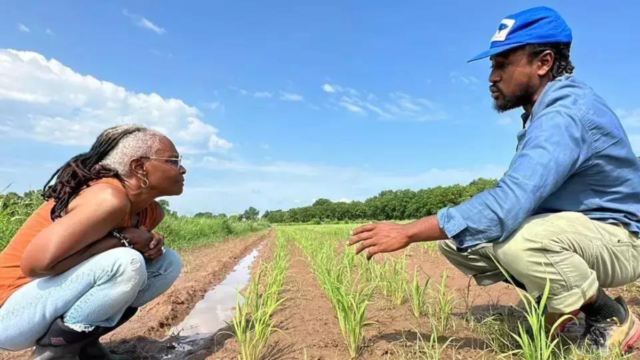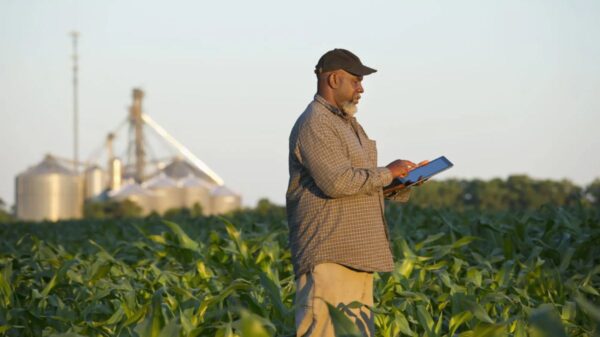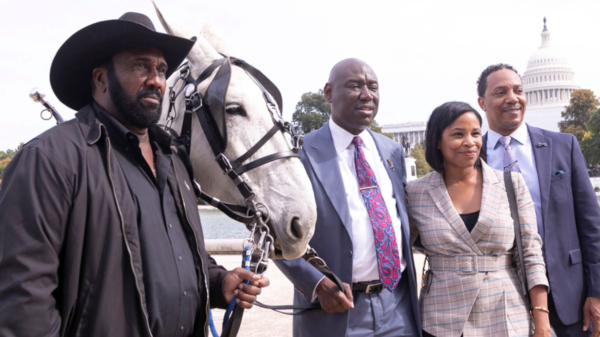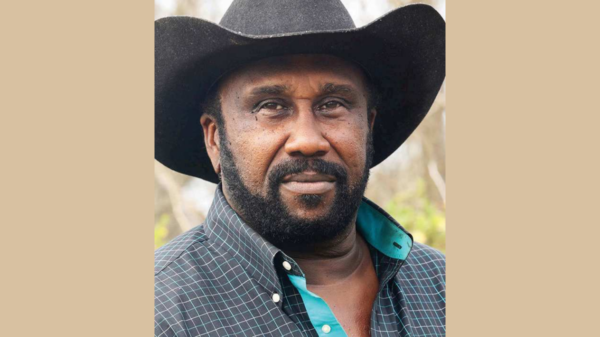
By Trisha Gopal
- Jubilee Justice is a cooperative that helps Black farming communities practice regenerative agriculture.
- The organization harkens back to the legacy of practices used in the 19th and 20th centuries.
- Between 1910 and 1997, Black farmers lost around 90% of their property in the US.
Konda Mason has always understood the importance of land.
Her grandfather left Alabama in the middle of the night when her dad was a baby, afraid he was going to be lynched because he owned property and a provision store. He left his land, abandoned the store, and took his family to California, where Mason eventually grew up.
“I’ve had that story,” Mason told Insider. “I know that we had land once, and I grew up landless, completely landless.”
Her grandparents still owned a small plot of land in California, less than a quarter of an acre, to grow food like collard greens and tomatoes and raise livestock to remain food secure. When Mason’s mother died, her ashes were sprinkled among the collard patch.
The tradition of growing food is one that Mason has continued, maintaining a garden in every home she’s lived in. Today, she’s the president and cofounder of Jubilee Justice, a cooperative of Black farmers and an organization that helps Black farming communities practice regenerative and sustainable agriculture.
“I always said when I grow up, I want to be a farmer. People thought I was kidding — I really wasn’t,” Mason said.

Konda Mason with rice businessman Robert Bimba and Jubilee Justice SRI advisor Erica Styger. Konda Mason courtesy of Jubilee Justice
Returning to the land
Even though land was such a large part of Mason’s family story, she said she didn’t fully grasp how central it was to every conversation about race and money until later in life.
In 2018, Mason began a project called Jubilee Journeys — a series of conversations that bring together white participants who are financially well-off with spiritual and thought leaders from communities of color to promote racial healing and speak about the ways capital should be used and redistributed. She started these meetups hoping to talk through alternatives to extractive capitalism.
“And then I realized it was about land,” Mason said. It sparked the four pillars that now guide her work: land, race, money, and spirit.
One of the attendees to the first Journey in California was a woman named Elisabeth Keller.
“The first thing out of her mouth was, ‘I’m a white woman whose family owns a former plantation in Louisiana,'” Mason said. Keller’s family had owned the roughly 3,000-acre Inglewood Farm property in Alexandria since her grandfather bought it in the 1920s.
“She wanted to kill what happened on this land, both to the land, which was very toxic, filled with chemicals,” Mason said. “And then what happened with the people here. It was a cotton plantation.”
After the Civil War, formerly enslaved people and their descendants continued to work as sharecroppers on the plantation.
Mason suggested hosting the next Journeys conversation at Inglewood as a way to promote healing. The meeting was a success, leading to another the following year. At one of these discussions, an agricultural attorney talked openly about the plight of Black farmers.
“I was so moved and it touched such a deep place, I just kept that in my heart,” Mason said.

Donna Isaacs, a permaculture farmer and a member of Jubilee Justice. Donna Isaacs courtesy of Jubilee Justice
Up until this point, Mason had no background in farming. But three months later, at a conference in New York, Mason ran into Caryl Levine, the cofounder of the organic rice company Lotus Foods. She became fascinated with Levine’s sustainable approach to rice farming. Levine had adopted an agriculture-management method known as the System of Rice Intensification, which uses up to 50% less water, requires up to 90% less seed, and can result in 20% to 100% more yield.
Crucially, this method also reduces methane emissions. Rice production is responsible for 10% of global methane emissions.
At the time, most of Lotus Foods’ work was happening in Asia and Africa. Levine opened up about her desire to create a domestic supply chain of farmers in the US. Ideas began to converge.
“I said to her, ‘What about Black farmers?'” Mason said. Two weeks later, she was on a Zoom call making plans. The newly formed Jubilee Justice Rice Project would be centered on Inglewood Farm, what Mason describes as “the belly of the beast.”
“This is where the worst of the worst has happened,” Mason said, referring to the history of slavery on the plantation. “The universe just really has this interesting way of bringing me here to this land.”
Land loss
Rice isn’t the only crop producing methane. In 2021, agriculture accounted for 10% of all greenhouse-gas emissions in the US. Modern-day farming practices release methane and carbon dioxide from the soil, contributing to increased warming. Livestock, especially cows, produce methane as they digest grass and grains.
Nature is meant to be symbiotic. The insects and microbes that live in the soil capture carbon and convert it into organic material. But with the mass use of herbicides and pesticides, these beneficial organisms are killed off.
The use of agrochemicals such as fertilizers began in the 1960s and resulted in dramatically higher crop yields, changing farming practices. Average corn yield rose from 20 bushels per acre in 1940 to 150 bushels per acre by the early 2000s, partially due to pesticides and fertilizers. In that same period of time, cotton yields increased fourfold and soybean yields by threefold.
But as pests began to adapt to these chemicals, more agrochemicals continued to be introduced, leading to more environmental damage.
The 20th century also changed the demographics of farmers in the US.
In 1920, there were nearly 1 million Black farmers in the United States, accounting for 14% of all farmers. Today, there are fewer than 50,000 — just 2% of all farmers in the country are Black.
During the Jim Crow era, white landowners began intimidating Black farmers into abandoning their land. Violent, racist attacks led many Black farmers to flee the South as a part of the Great Migration.
The federal government also practiced discrimination and intimidation tactics. A 1999 class-action lawsuit against the US Department of Agriculture claimed that the agency racially discriminated against Black farmers in distributing farm loans, forcing many of them into foreclosure. Per the settlement agreement, the USDA has paid or credited around $1 billion to Black farmers, making it one of the largest civil-rights settlements in US history.
The payout, however, was a drop in the ocean compared to the impact that land loss had on the racial wealth divide over the next century.
In 1910, Black farmers owned between 16 to 19 million acres of land, according to the Census of Agriculture. But between 1910 and 1997, Black farmers lost around 90% of their property, while white farmers only lost 2% during the same time period.
One study estimated that land loss cost Black farmers around $326 billion.
A regenerative future
Through Jubilee Justice, Mason wants to reclaim some of that history. She hopes to create a platform that addresses economic and racial equity for Black farmers, while also encouraging sustainable agriculture.
The farmers who are a part of the Jubilee Justice network all emphasize regenerative, sustainable, organic forms of agriculture. Regenerative agriculture aims to work with nature rather than against it by rejuvenating soil health, boosting biodiversity, and developing practices that are climate resilient. Many of these farming practices were developed by Indigenous communities prior to the Industrial Revolution.
The farmers in Jubilee Justice come from different backgrounds — some were raised on family farms while others built upon their interest in climate activism.

Grand opening of the Jubilee Justice rice mill. Linda Jones courtesy of Jubilee Justice
Recently, they built a rice mill that they own as a cooperative. For Mason, being able to own the means of production is critical.
“That’s one of the ways that they kill Black farmers and take their land — they will have a contract and then next thing you know they reneg on that contract,” Mason said of relying too heavily on external vendors and manufacturers. “Most people are one season away from bankruptcy.”
Jubilee Justice builds upon a legacy of Black farmer cooperatives. In the 19th century, after the Southern Farmers’ Alliance refused to admit Black farmers except in certain chapters, Black farmers started the Colored Farmers’ National Alliance and Co-operative Union.
By 1891, they had over a million members. Following the civil-rights movement in the 1960s, there was a renewed interest in farming cooperatives.
By emphasizing cooperative economics, Mason hopes to move away from the mindset of hyper-individualism that capitalism values and to show Black farmers that if they rely on each other, the whole community can succeed together.
To Mason, land is sacred. Mason reflected back to her years giving eco tours in the Ecuadorian Amazon.
“Every time I left, I would be in tears,” she said. “I didn’t want to go. I didn’t want to leave it. I knew that it was in danger. It’s such an impact to spend time in the rainforest and to understand this planet and how precious and beautiful it is.”
“I am just bent on leaving as much of a legacy as I possibly can and everything that I touch to come from a place of a regenerative mindset,” she said.









You must be logged in to post a comment Login